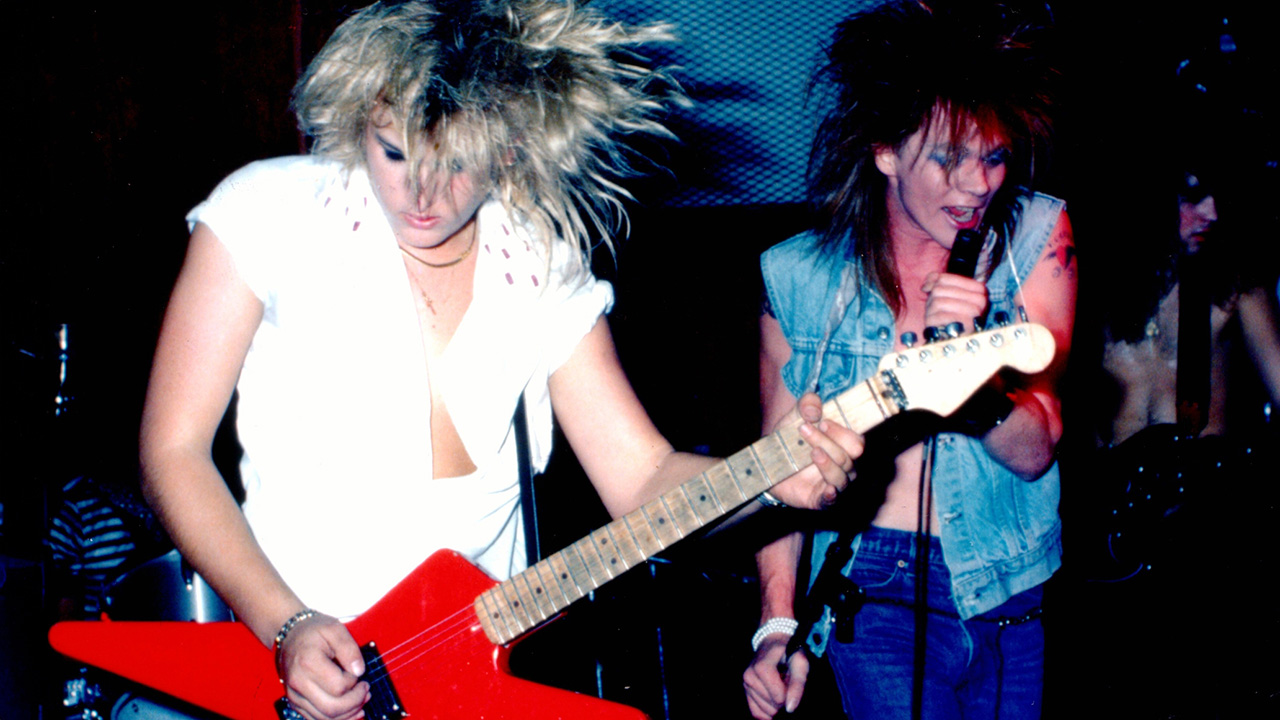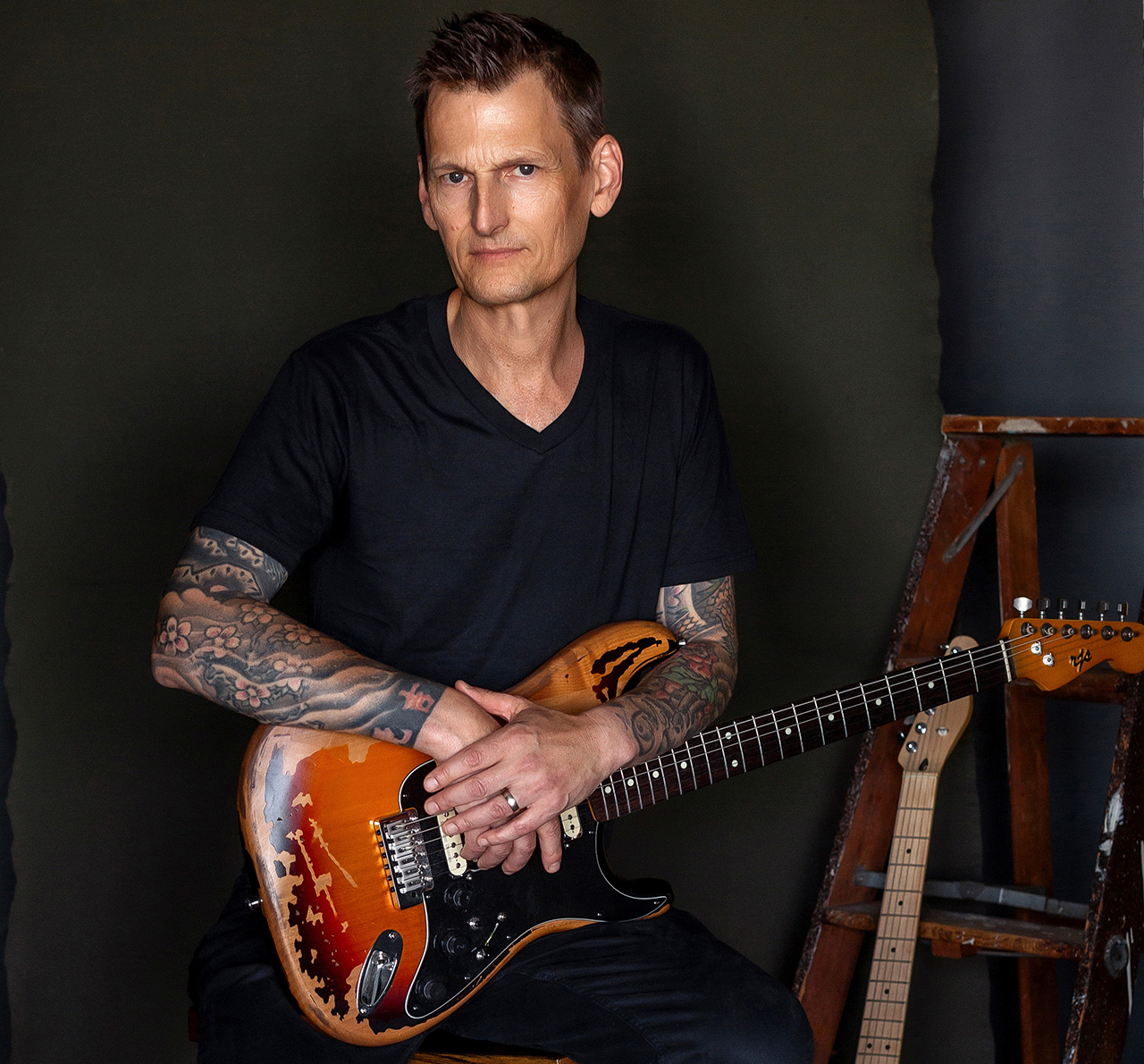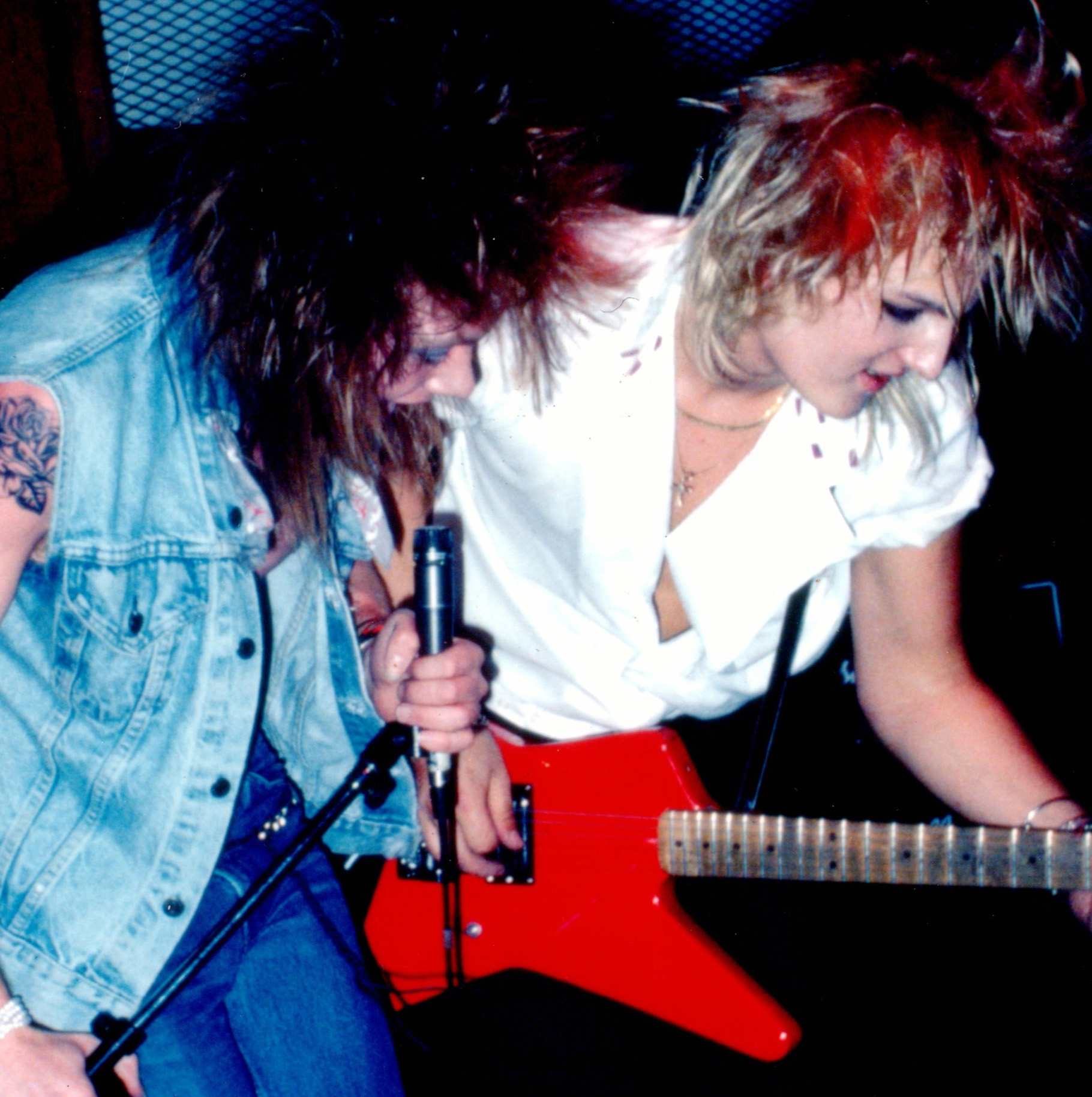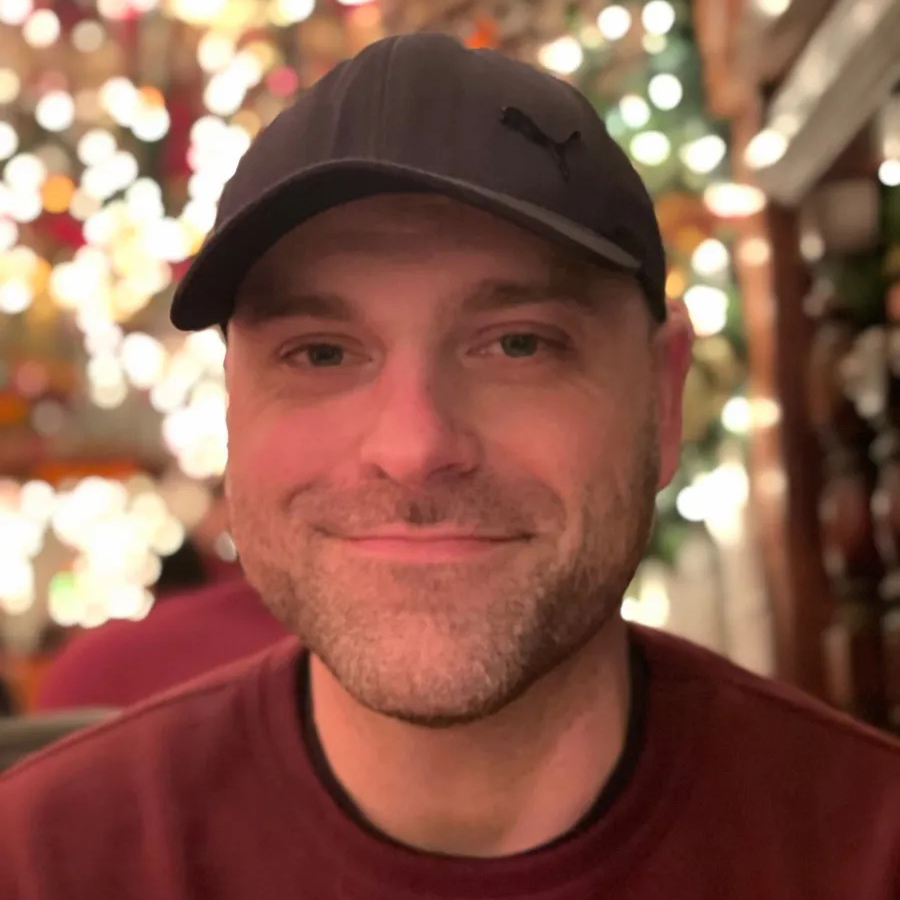“I wish I’d been treated more fairly by the record execs, but I was part of the creation of one of the biggest bands of all time. That’s a nice legacy”: How LA guitarist Chris Weber laid the foundations for Guns N’ Roses in a single studio session
Weber’s parents lent the Axl Rose-fronted Hollywood Rose $500 to make the demo that started a rock ’n’ roll revolution. Despite being replaced by Slash and losing credit for his contributions, he wouldn’t have things any other way

Before there was Guns N’ Roses there was Hollywood Rose. And before there was Slash, there was Chris Weber, a teenage riffmeister with a love for sleaze-meets-glam guitar.
He joined Hollywood Rose after meeting Izzy Stradlin through Tracii Guns, and he can’t forget how Axl Rose’s voice made him feel: “At times it sent shivers up my spine.”
The early lineup consisted of Weber and Stradlin – both playing bass and guitar – Rose and drummer Johnny Kreis. With a loan from Weber’s parents, they recorded a demo in 1984, which featured two future GN’R songs, Anything Goes and Reckless Life.
By that time, of course, Weber was long gone. But would they have got there without him? “Who knows?” he says. “I was a riff-driven lead guitarist, and GN’R ended up musically driven by great guitar riffs. Maybe they’d have found their way there eventually – but I think I laid down the foundation.”
Reporting that he has “no real regrets,” he adds: “Changing anything might have altered what the band ultimately became. Maybe I wish I’d been treated a bit more fairly by some of the record executives along the way, but I was part of the creation of one of the biggest bands of all time.
“And I co-wrote songs on two incredible albums, including one of the most iconic rock records of all time. That’s a nice legacy.”
How did you first meet Izzy Stradlin?
All the latest guitar news, interviews, lessons, reviews, deals and more, direct to your inbox!
“I’d been asking Tracii for a year or so to join his band, but he said it was a one-guitar setup. He got sick of me asking and introduced me to Izzy in 1983 at the Rainbow. We sat talking in Tracii’s truck. Izzy told me about his vision for the band, and I was sold immediately.
“He was the absolute coolest guy I’d met in the scene. He had the look and an easygoing personality – but underneath it all, he was focused and driven. I was all in for whatever band he wanted to create.”
When did Axl come into the picture?
“Izzy introduced me to Bill, as he was still going by – I never did call him Axl – within a week. We went to his girlfriend Gina’s apartment on Whitley Avenue, right above Hollywood Blvd. It was a cool old rundown apartment from the ’30s with one of those old elevators where you had to pull the gate closed to get it to move.
“I generally liked him. He wasn’t as cool as Izzy, but I did like him. I was amazed by his voice, but it wasn’t until we started writing and rehearsing that I finally got to hear the incredible tone and range he had. Initially, he mainly sang in a lower register. But soon he started to sound high, growly and powerful.”
What were the first songs that you worked on together?
“Anything Goes, which was called My Way Your Way (Anything Goes), Reckless Life, Killing Time and Shadow of Your Love. We listened to a lot of Aerosmith’s Rock in a Hard Place and Thin Lizzy’s Black Rose.
“Axl liked Black Rose so much that I ended up paying for a tattoo inspired by the album cover. I also bought him his first tattoo: a broken heart with lightning bolts.”

What’s the story behind Hollywood Rose’s demo?
“Every band needed a demo tape to give to promoters and record companies. Unless you already had a good following, promoters required one too. I borrowed $500 from my parents and we booked time in a studio. The demo was later released as The Roots of Guns N’ Roses.
“Izzy, Axl and I had been working on the songs at my parents’ house. We didn’t have a drummer or bass player yet, so we looked in the local papers and found Johnny Kreis. He learned the songs on the day of the recording, and we knocked ’em out in just eight hours. Izzy and I traded off on playing bass.”
Slash was technically a better lead guitar player than I was at the time… more bluesy and melodic
How did your sound differ from what Guns would become known for?
“Our sound was rawer – less effects and more in your face. I had a candy apple red Starbody guitar with a Charvel maple neck and a Kahler locking bridge. It only had one knob: volume! I had a Flying V as a backup, but I rarely used it.
“I used a Marshall JCM800 and a Marshall 4x12. I had two Marshall half-stacks, and Izzy used one. The only effects pedal I used was an MXR Distortion+, with no channel switching. If I wanted less distortion I just turned my volume down!”
What was the label interest like in the demo?
“I think Columbia or CBS showed some early interest, but I let Izzy focus on that. I was just happy to be in a gigging band. Besides, I was 16 or 17 years old; I had no clue about the business. We did go to a couple of meetings in Century City and met with a few people, but nothing came of it while I was in the band.”
What led to Axl firing you and bringing Slash in?
“The truth is I was never fired. We played a show at The Music Machine in West LA, opening for Stryper. During the set Axl and I bumped into each other. He got mad, probably embarrassed, and quit. After that, he joined up with Tracii for a stint with LA Guns.
“Izzy started playing with the band London for a bit, then The New Hollywood Rose formed with Slash. I was off in NYC at that time. I stepped in and played a final show with them when Slash wasn’t available sometime around New Year's 1985, at Dancing Waters in San Pedro.”
Did you get along with Slash?
“We were friends – we went to Fairfax High together. We’d hang out at his house, with his snake in the snake closet, and did some considerable drinking! He was a great guy. I wasn’t mad at all when he began playing with Hollywood Rose. He was technically a better lead guitar player than I was at the time, and stylistically much more bluesy and melodic.”

You co-wrote Anything Goes, which ended up on Appetite for Destruction. What’s the story behind the song?
“I’d been listening to Aerosmith’s Rock in a Hard Place a lot. I loved Jimmy Crespo’s riffs – they were so swanky and loose. That was the inspiration. Izzy’s part, while seemingly completely different, works as a perfect complement to my guitar arrangement. I’m not sure who suggested that the verses get a halftime treatment, but both versions work.”
How about Reckless Life and Move to The City?
“My riff for Reckless Life inspired Izzy’s rhythm part. Originally the drums sounded more like Mötley Crüe’s Red Hot. I used to love playing that intro live; I used the Kahler to make it sound like a revving engine.
I moved the sound into something way more guitar-based than what Axl and Izzy might have done by themselves
“I wrote Move to the City after I’d left the band, using a Tascam 244 and a Dr Rhythm drum machine. I gave the song to Izzy and he put his guitar part over it. We collaborated on the lyrics; he sang them on that first recording. I think I had a Shure SM58. I never played the song live with the band; but it was put on Live Like a Suicide along with Reckless Life.”
There’s been a lot of debate over this: is it true you co-wrote Shadow of Your Love?
“I remember writing it. Early on, all of our songs were collaborations. The same is true for Back Off Bitch. All these songs are either on our early Hollywood Rose demos or in rehearsal video footage. But the powers that be decided not to grant me co-writing credit on those – alas.”
How do you measure your impact on the sound, vibe, and songs that would become synonymous with GnR?
“Those songs allowed us to play that initial night that Slash and Steven Adler came to at Gazzarri’s. I moved the sound into something way more guitar-based than what Axl and Izzy might have done by themselves. I’m sure glad they did what they did; Appetite is a masterpiece and an important part of music history.”
What gear are you using now?
“As a psychotherapist, I do music therapy with many of my clients. Waterstone has provided me with several guitars and basses which I solely use in the work. They play great and look cool as hell. The Starbody guitar was kind of a one-trick pony – one knob and all attitude. These days, I’m after more nuance and feel in my playing and recording.
“I’ll always be a Marshall guy at heart, but the Vox AC30 is a beautiful amp. It’s rich and punchy in all the right ways. I’ve been using it exclusively for the past decade.”
Andrew Daly is an iced-coffee-addicted, oddball Telecaster-playing, alfredo pasta-loving journalist from Long Island, NY, who, in addition to being a contributing writer for Guitar World, scribes for Bass Player, Guitar Player, Guitarist, and MusicRadar. Andrew has interviewed favorites like Ace Frehley, Johnny Marr, Vito Bratta, Bruce Kulick, Joe Perry, Brad Whitford, Tom Morello, Rich Robinson, and Paul Stanley, while his all-time favorite (rhythm player), Keith Richards, continues to elude him.
You must confirm your public display name before commenting
Please logout and then login again, you will then be prompted to enter your display name.



